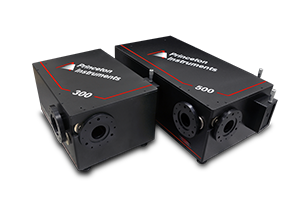Volker Deckert
Light | Science & Applications
Direct molecular-level near-field plasmon and temperature assessment in a single plasmonic hotspot
Introduction
Tip enhanced Raman spectroscopy (TERS) is a powerful technique for investigating materials and molecules in surface and material science and biological systems on the nanometer scale. However, as Marie Richard-Lacroix and Volker Deckert from Jena (Germany) point out in a recent paper, widespread adoption of the TERS technique is still inhibited by the complexity of collected information as well as lack of basic understanding of parameters influencing experiment operation.
TERS combines spectroscopy with microscopy and near field scanning techniques such as AFM or STMs and relies on the plasmonic enhancement of electric fields at the atomically sharp end of a fine tip (some other effects play a role as well). Similar to surface enhanced Raman spectroscopy this leads to a massive enhancement of Raman signals when the tip is brought close to a surface, combined with down to sub-nm spectral resolution as the field enhancement is confined to the tip diameter.
The researchers show how they characterize the plasmonic resonance at the TERS tip and measure the near-field temperature, by simultaneous detection of Stokes and Anti-Stokes Raman signals. Their setup includes a 532nm laser for excitation, AFM head mounted to an inverted microscope and a sensitive spectrograph and camera (SpectraPro HRS, PIXIS, Teledyne Princeton Instruments). A set of volume Bragg notch filters is used to suppress the Rayleigh line while giving access to the low-wavenumber Stokes and Antistokes scattering regimes. They show how this technique can be used as a tool to monitor the plasmon resonance and why it is important to control the quality of TERS data acquisition. They deduce that their technique is “an asset to any day-to-day TERS experiments” as important measurement parameters that were not accessible before can now be monitored in real time.


